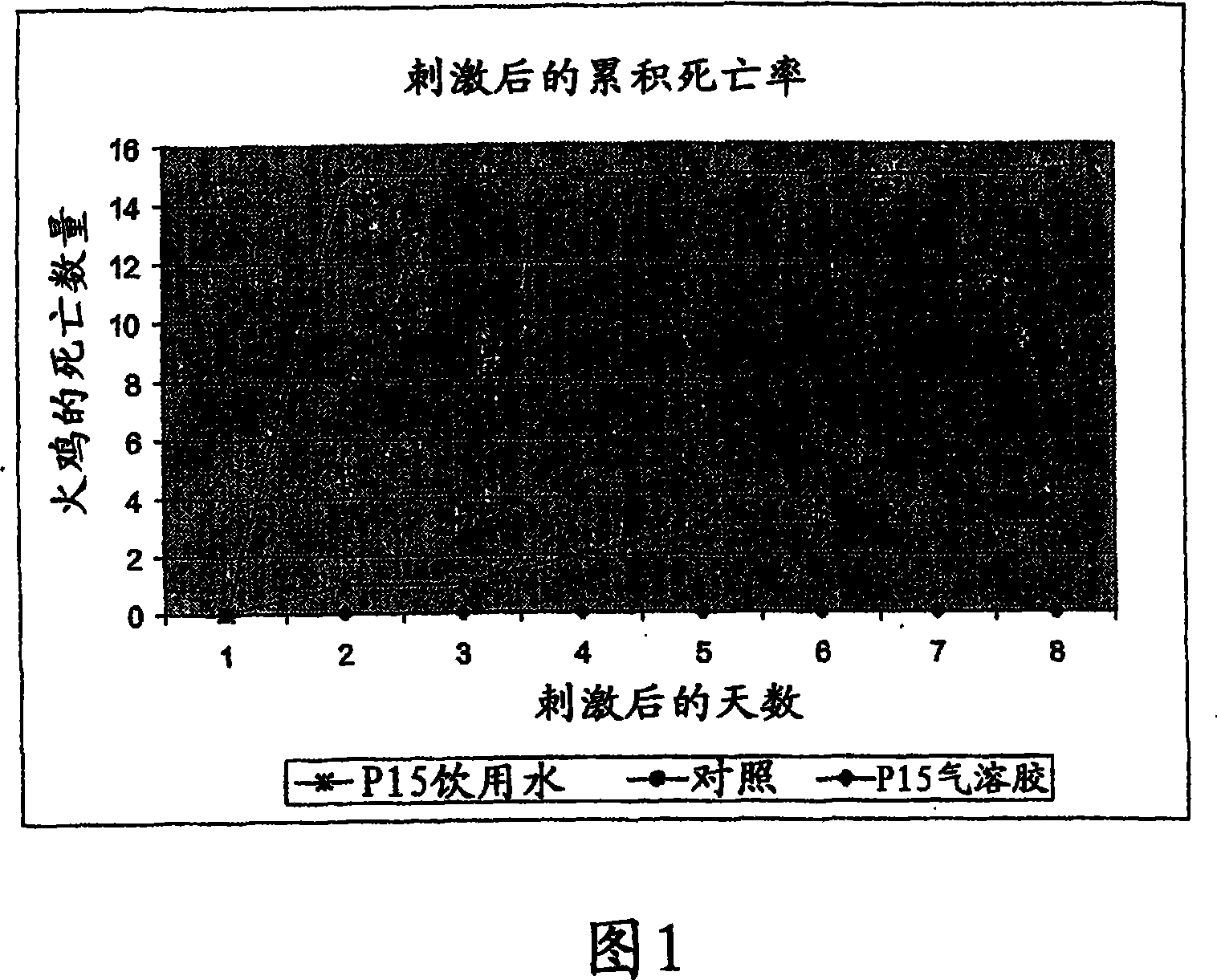Pasteurella multocida vaccine
A Pasteurella, bloody technology for use in diagnostic assays to address issues of unknown nature of attenuating behavior, outbreaks of pasteurellosis, etc.
- Summary
- Abstract
- Description
- Claims
- Application Information
AI Technical Summary
Problems solved by technology
Method used
Image
Examples
Embodiment 1
[0081] Selection of spontaneous nalidixic acid-resistant mutants of P-1059
[0082] Pasteurella multocida strains were grown overnight at 37°C in Luria-Bertani (LB) broth. 0.2 ml of the culture was sprayed onto LB agar plates containing 10 mg / ml nalidixic acid and incubated at 37°C for 48 hours. A pair of resistant colonies were picked and streaked on LB agar plates containing nalidixic acid. After further incubation for 48 hours, a resistant colony was picked and inoculated in 10 ml LB broth containing 20 mg / ml nalidixic acid and grown overnight. The culture was mixed with 5ml glycerol, aliquoted into 1.8ml tubes (1ml / tube) and stored at -70°C. The nalidixic acid resistant strain was designated P-1059NR.
Embodiment 2
[0084] Selection of spontaneous thyA-mutants of P-1059NR
[0085] P-1059NR was cultured at 37°C in LB medium containing 20 mg / ml nalidixic acid and 10 mg / ml thymine. 0.2 ml of the culture was spread onto LB plates containing 20 mg / ml nalidixic acid, 10 mg / ml trimethoprim and 50 mg / ml thymine and incubated at 37°C for 24-48 hours. Ten colonies were transferred to the same type of plate and the LB plate contained only 20 mg / ml nalidixic acid and 10 mg / ml trimethoprim. Colonies that grew on the first plate but not on the second plate were thyA-mutants. One of the thyA-mutant mutants was inoculated into a culture solution of 10 ml LB containing 20 mg / ml nalidixic acid and 150 mg / ml thymine and cultured overnight at 37°C. The medium was mixed with 5ml of glycerol, aliquoted into 1ml / tube and stored at -70°C. The conserved thyA-mutant is called P9818.
Embodiment 3
[0087] Construction of vector pYL1.3
[0088] The E. coli thyA gene was amplified from genomic DNA of E. coli K-12 by polymerase chain reaction (PCR) using primers 5'-AAGCTTGGCTGTCTCAGGTTTGTTCC-3' and 5'-TAGCTTGGCCAGTTTCTATTTCTTCG-3'. The PCR fragment was trimmed with T4 DNA polymerase plus dGTP. pLOF / Ptt (Herreno, M., de Lorenzo, V. Timmis, K.N., J. Bacteriology, 172, 1990, 6557-6567) was digested with Xba I and Sf to remove the Ptt gene and partially filled in with Klenow enzyme and dCTP. The trimmed PCR fragment (one end) was ligated into a partially filled XbaI end of the digested plasmid. The other end of the PCR fragment and the Sfi end of the digested plasmid were blunt-ended with T4 DNA polymerase and dNTPs. The plasmid treated with the ligated PCR fragment was self-ligated and transformed into E. coli SM10. One transformant containing the correct size plasmid was purified, aliquoted and stored at -70°C. The plasmid in this transformant was named pYL1.3.
PUM
 Login to View More
Login to View More Abstract
Description
Claims
Application Information
 Login to View More
Login to View More - R&D
- Intellectual Property
- Life Sciences
- Materials
- Tech Scout
- Unparalleled Data Quality
- Higher Quality Content
- 60% Fewer Hallucinations
Browse by: Latest US Patents, China's latest patents, Technical Efficacy Thesaurus, Application Domain, Technology Topic, Popular Technical Reports.
© 2025 PatSnap. All rights reserved.Legal|Privacy policy|Modern Slavery Act Transparency Statement|Sitemap|About US| Contact US: help@patsnap.com

